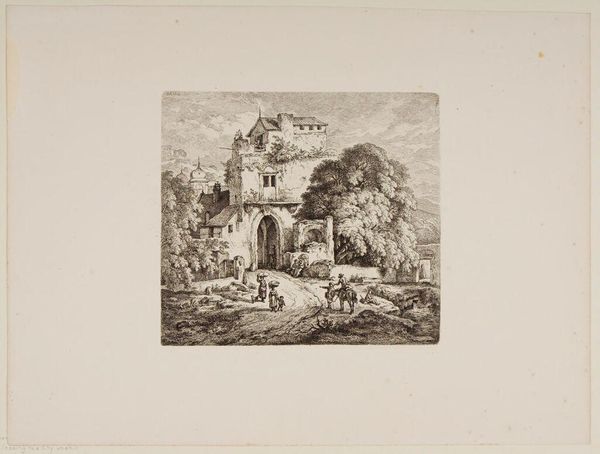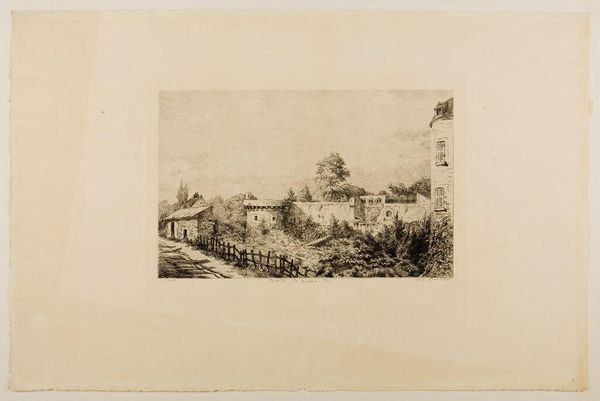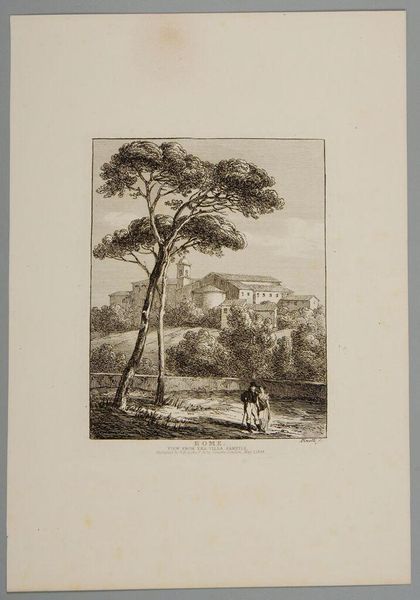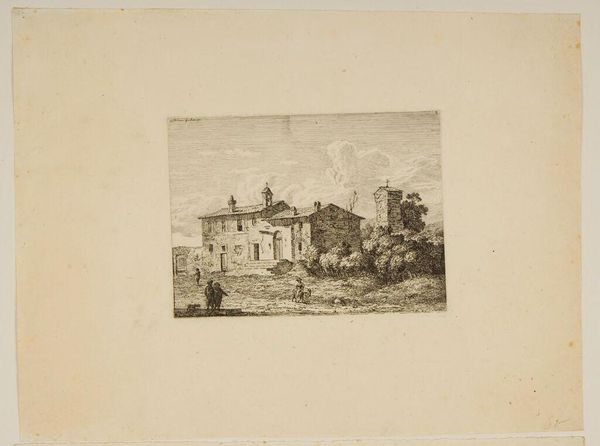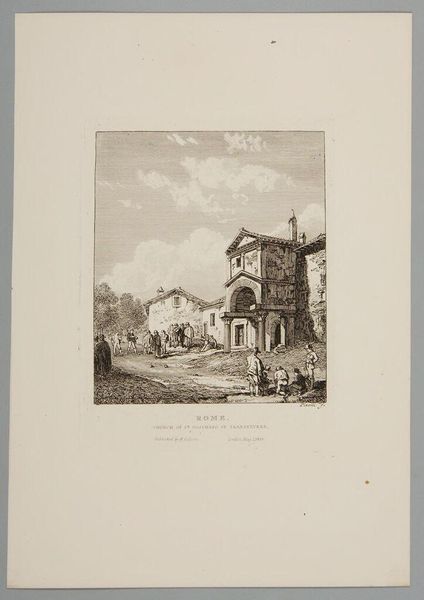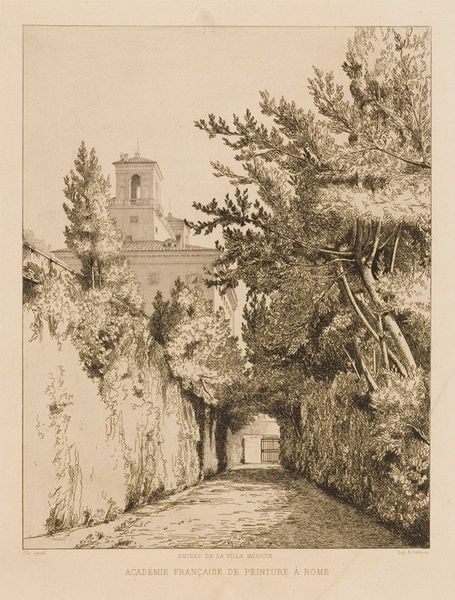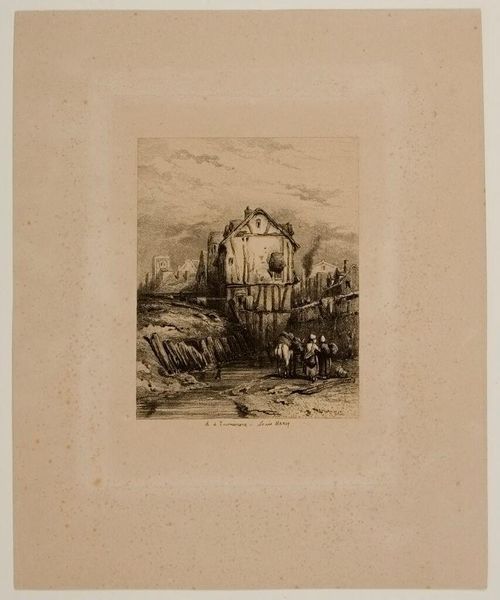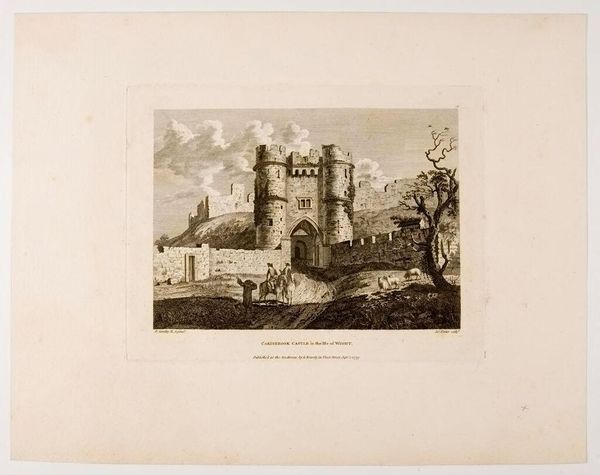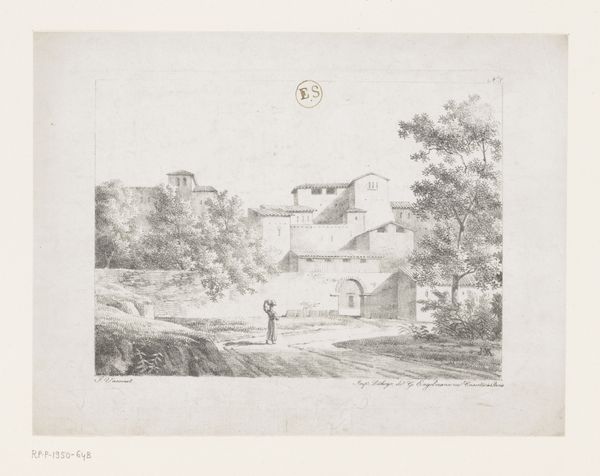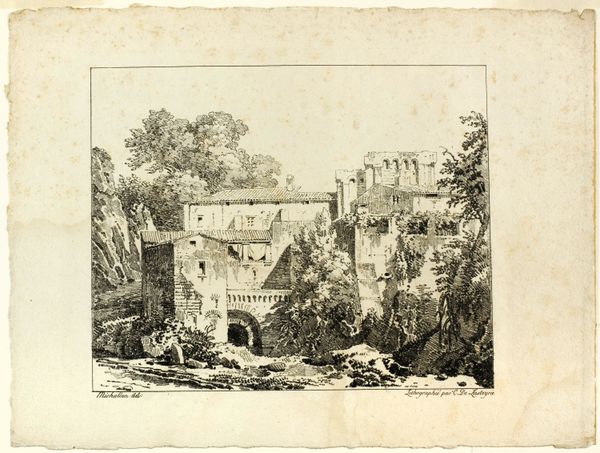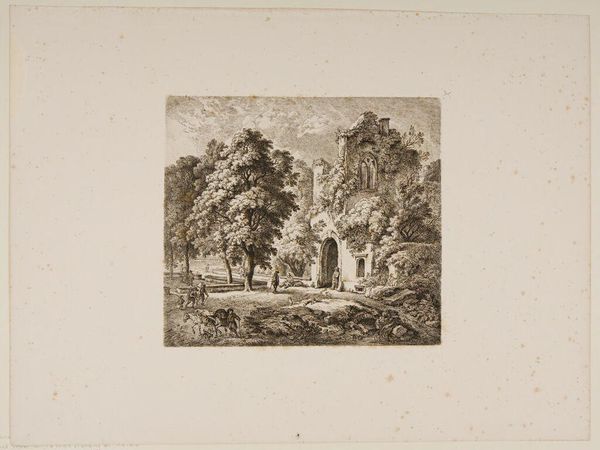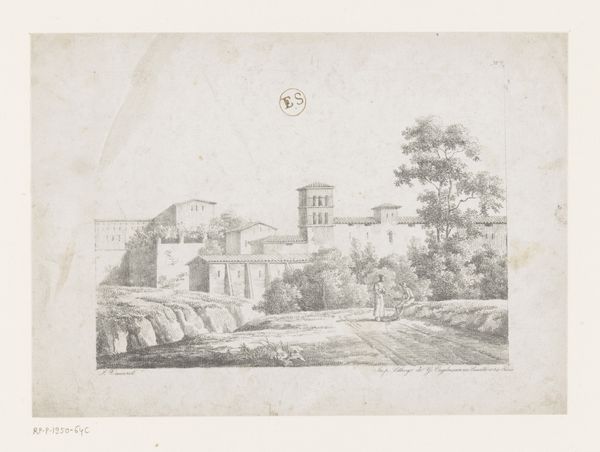
Copyright: CC0 1.0
Curator: This is Bartolomeo Pinelli's "Church of S. John and S. Paul," an etching rendering the titular Roman church. I see it as a testament to the grandeur of antiquity, seen through the eyes of a romantic soul. Editor: It strikes me as somber. The stark contrast achieved through etching emphasizes the ruinous state of the architecture. And those figures in the foreground look rather destitute; a stark contrast to the opulence of the church in the distance. Curator: Perhaps, but Pinelli, through his choice of medium, elevates the everyday, turning the stones and mortar into something truly special and deeply felt. Editor: But let's not forget the materiality of etching—the acid, the metal plate, the labor involved in reproducing this image for a wider audience. This wasn't just about romanticizing ruins; it was about democratizing access to them, albeit in a mediated form. Curator: Even if democratized, the emotional core remains... a melancholic, beautiful ode. Editor: Right, but still built on labor, production, and a material reality we should acknowledge. Curator: Fair point. I’m glad we considered the role of art as a function of material conditions. Editor: And I'm glad we lingered with Pinelli's emotional intent, something easily overlooked in material analysis.
Comments
No comments
Be the first to comment and join the conversation on the ultimate creative platform.
